RS Aggarwal Class 6 Math Sixteenth Chapter Triangles Exercise 16A Solution
EXERCISE 16
(1) Take three non collinear points A, B and C on a page of your notebook. Join AB, BC and CA. What the figure do you get?
Name:
(i) The side opposite to ∠C = AB
(ii) The angle opposite to the side BC = ∠A
(iii) The vertex opposite to the side CA = B
(iv) The side opposite to the vertex B = AC

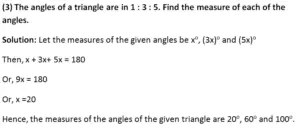
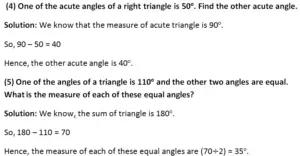
(6) If one angle of a triangle is equal to the sum of the other two, show that the triangle is a right triangle.
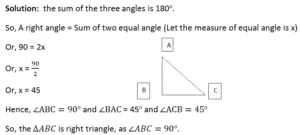
(7) In a ∆ABC, if 3 ∠A=4∠B=6∠C, calculate the angles.
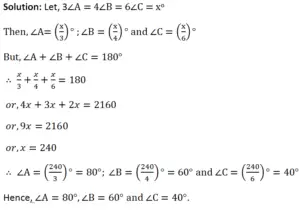
(8) Look at the figures given below. State for each triangle whether it is acute, right or obtuse.

Ans: (i) Obtuse
(ii) Acute
(iii) Right
(iv) Obtuse
(9) In the given figure some triangles have been given. State for each triangle whether it is scalene, isosceles or equilateral.
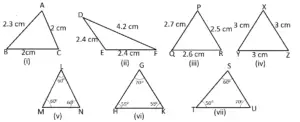
(i) Isosceles
(ii) Isosceles
(iii) Scalene
(iv) Equilateral
(v) Equilateral
(vi) Isosceles
(vii) Scalene
(10) Draw a ∆ABC. Take a point D on BC.
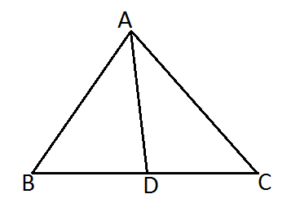
Join AD.
How many triangles do you get?
Name them.
Ans: Three, ∆ABD, ∆ADC and ∆ABC
(11) Can a triangle have
(i) Two right angles?
Ans: No
(ii) Two obtuse angles?
Ans: No
(iii) Two acute angles?
Ans: Yes
(iv) Each angle more than 60o?
Ans: No
(v) each angle less than 60o?
Ans: No
(vi) Each angle equal to 60o?
Ans: Yes
(12) Fill in the blanks:
(i) A triangle has 3 sides, 3 angles and 3 vertices.

(v) The angle opposite to equal sides of an isosceles triangle are equal.
(vi) The sum of the lengths of the sides of a triangle is called its perimeter.
For more exercise solutions, Click Below –
Leave a Reply